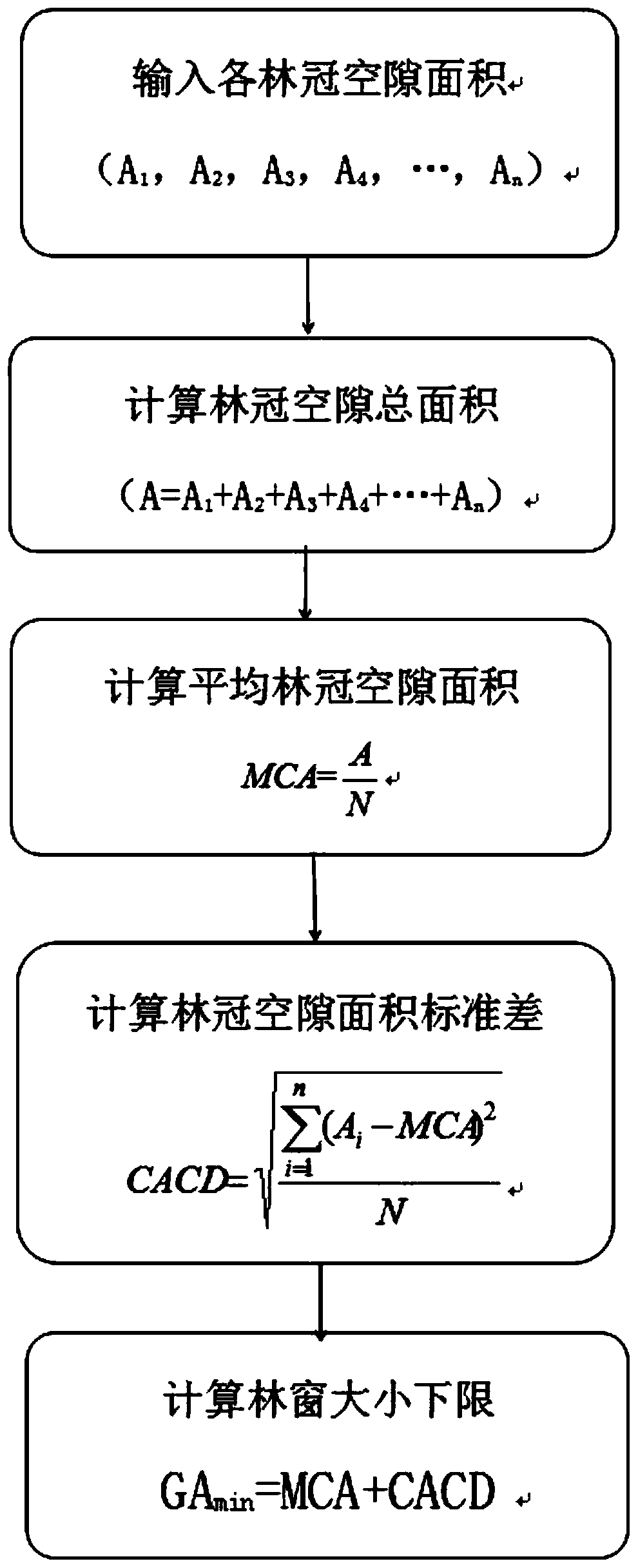Method for determining forest gap area lower limit
A technology for determining the method and area, applied in the field of determining the lower limit of the area, which can solve the problems of lack of scientific basis and unified standards, failure to quantify the concept of gaps, and difficulty of gaps in the wild.
- Summary
- Abstract
- Description
- Claims
- Application Information
AI Technical Summary
Problems solved by technology
Method used
Image
Examples
Embodiment Construction
[0027] The present invention will be further described below in conjunction with the accompanying drawings and embodiments, but not as a basis for limiting the present invention.
[0028] Embodiment of the present invention: a method for determining the lower limit of the gap area, as attached Figure 1-2 Shown, the lower limit of the gap area defined by the present invention is represented by the sum of the average forest canopy area MCA and the standard deviation CACD of the forest canopy area; the forest gap can significantly enhance the intensity of light in the forest, thereby changing the composition structure of different light-demanding plants under the forest. The renewal and succession of canopy have an important role; while the effect of common canopy gaps is not significant. Therefore, it is considered that the gap area should be significantly larger than the normal canopy gap, that is, the gap area should be larger than the confidence interval range of the canopy ...
PUM
 Login to View More
Login to View More Abstract
Description
Claims
Application Information
 Login to View More
Login to View More - R&D
- Intellectual Property
- Life Sciences
- Materials
- Tech Scout
- Unparalleled Data Quality
- Higher Quality Content
- 60% Fewer Hallucinations
Browse by: Latest US Patents, China's latest patents, Technical Efficacy Thesaurus, Application Domain, Technology Topic, Popular Technical Reports.
© 2025 PatSnap. All rights reserved.Legal|Privacy policy|Modern Slavery Act Transparency Statement|Sitemap|About US| Contact US: help@patsnap.com



